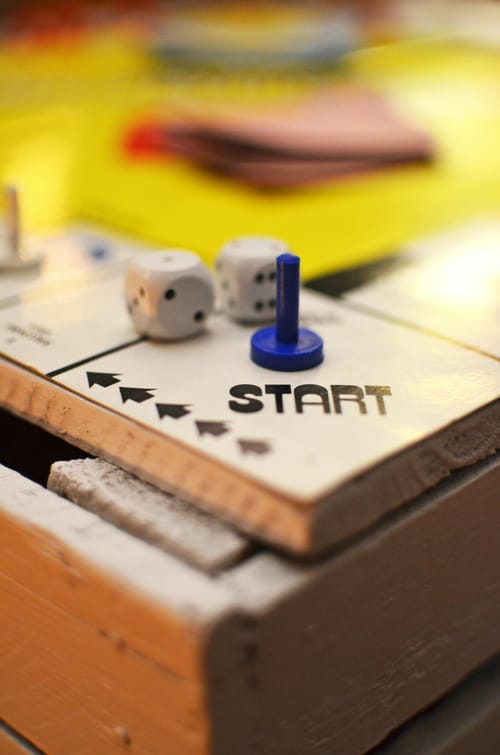Observe, Don’t Overplan
Ok, here’s the key to starting out with home education: breathe, relax and watch your kids. That’s it.
The best first step isn’t planning - it’s observing. The first few weeks (or months sometimes) - especially if your child has been in school - are all about relaxing into your new situation and rediscovering what learning looks like when it's natural and enjoyable.
⚠️ If the local authority are pressuring you for a plan, it's ok to not have it all worked out straight away - in fact, the chances are you won't. You can find more information and templates here. It's ok, and completely normal, to have settling in time to work out what's best for your child.
Before you worry about curriculums, plans or resources, take a few weeks just to notice:
- What captures their interest
- When do they seem most focused or creative?
- What activities, topics or subjects make them light up - and which ones cause groans?
- Which environments energise them - and which drain them?
🔎 For more on this, have a read for free of Part 1 of my guide A Learning Environment That Works.
These quiet observations will tell you far more than any test or workbook. Children are naturally curious and capable - and when you give them space, they often show you exactly how they learn best.
A few little tips:
Start small:
The great thing about home ed is that learning doesn’t have to be scheduled, rushed or pressured. If you catch yourself worrying about your child getting 'behind,' feeling like you have to prove they’re learning, or panicking because they don’t understand something yet - it’s even more of a sign to slow down. When parents are stressed or panicking, it makes learning feel tense, and that’s not the best environment for kids to explore and grow.
Slow down, take your time and let your children explore without stress. There is no rush and you do have time. Don’t try to overhaul everything or launch a huge, shiny new plan in week one. Choose a few subjects or areas of interest together, and see how things unfold. When you tune in calmly to how they learn and what interests them, you’ll start to see learning happen naturally - and you'll gain much more trust and confidence in the process.
Embrace the spaces in between:
You don’t need to fill every moment with structured activities. Walks, conversations, games or even a quiet morning with LEGO spread across the floor, give children time to process what they’re learning, make connections, and explore ideas at their own pace. Many of the richest learning moments happen in the questions they ask or the little unexpected discoveries they make. If your child doesn't have a great relationship with learning, this slower pace can help them to relax, build trust and rediscover joy in learning.
Take off the pressure and trust the process:
You’re not their teacher; you’re their guide. Kids are incredibly perceptive. They can sense an agenda - even a well-meaning one - which shuts down curiosity fast. Learning works best when they’re motivated by genuine interest and supported to explore at their own pace. It’s normal for you to feel pressure to 'get it right' at the start, (especially if others are piling on the pressure), but it takes time to find your rhythm. Some days you’ll wonder if you’re doing enough; other days, you’ll be amazed by what your child discovers on their own.
Observe and adapt:
Notice how your child responds to different things, and support them as they explore. Following a rigid checklist without working with the child in front of you, can lead to pushback, frustration and the feeling that home ed 'isn’t working' when really it’s just that the approach doesn’t fit your child’s natural way of learning.
Establish a flexible routine:
A comfortable rhythm can help your days feel manageable without being rigid. For example, you might do focused learning together in the morning and go out in the afternoons, or the other way around. Weekly activities or social meet-ups can give your week some shape too. Keep it light and flexible - it's very easy to overschedule! Some days will work brilliantly, others will feel chaotic or flat. It's all normal.
Create inviting learning spaces:
You can set up one or two calm, accessible spots for more focused learning s- a table by a window, a corner of the kitchen or a cosy reading nook. Keep a few books, art and craft resources and games easily accessible so they can be pulled out easily when inspiration strikes. sAnd honestly, you really don’t need much! Have a look at what you already have before buying anything new.
Pro tip: The first weeks are really just about observing and connecting. Trust yourself. Trust your child. You’re laying the foundation for a lifelong love of learning - which matters way more than any checklist.
Coming Soon: Beginner Bite 4 - Getting Others on Board
Learn how to handle opinions and stay confident in your home ed journey.
Check back soon at The Home Ed Help, or stay updated through my newsletter to be the first to know when it’s live.

